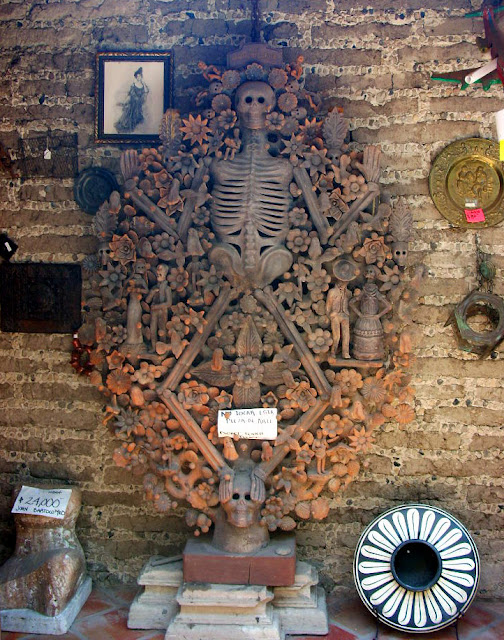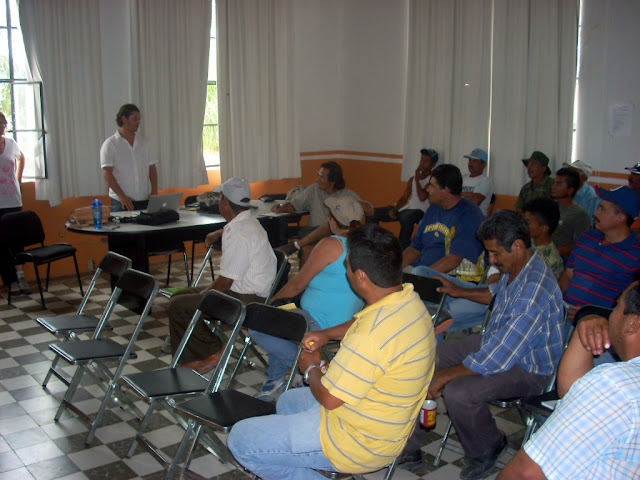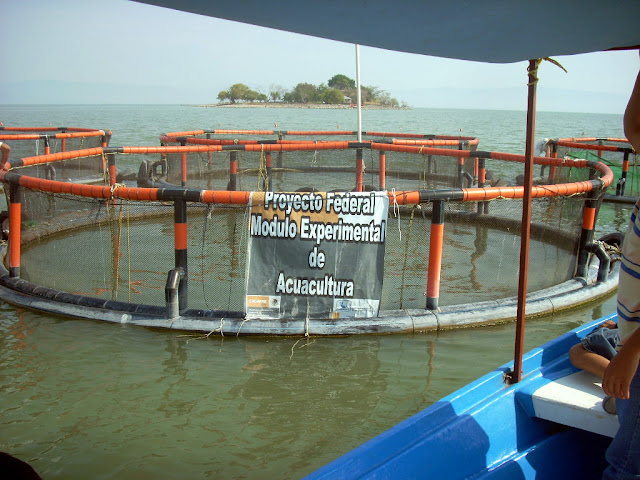The town of Tlachichilco del Carmen is located on the highway from Chapala towards Mezcala. Tlachichilco del Carmen is located in the Municipio of Poncitlán del Estado de Jalisco México.
It is at 1530 metros above sea level. At last count the population was 433 personas.
Economic Breakdown
In Tlachichilco Del Carmen there are 109 structures. Of these 104 are residences, 18 have dirt floors, and 9 of these are homes with only one bedroom. 88 of the homes have indoor bathrooms, 89 are connected to public services, 94 have electricity. Of these, 12 homes have a computer, 57 have clothes washers and 85 have televisions.
In other words, the town is humble, but with a wonderful energy and full of warm, welcoming people.
Our friend Karuna, who has been our local, pied piper of important social projects, took us to visit Tlachichilco, to meet the women of the local cooperative water purification project, the mayor of the town and her friend Juan Rojas, a youth who has a long resume of building projects and will be spearheading the Super Adobe project in Tlachichilco.
Welcome to Tlachichilco Del Carmen, a united town
one respectful of nature,
home of the Atzincallli Cooperative.
Our Cooperative built this water purification project.
Atzincalli means place where we safeguard the precious
water that gives us life.
July 16, 2011
Iglesia
Meeting Alicia
As we drove into the simple, quaint plaza we were met by a lovely, smiling, brightly dressed woman named Alice Contreras. Alice is the head of the water purification project which offers low priced bottled water. The village now has a water system for filling the 5-gallon drinking water bottles whereby the people can buy them for 5 pesos instead of 20 pesos, saving each family 4000 pesos/year. And in this town 4000 pesos is alot of money! This is to be a model for 30 million people in rural Mexico. The management and operation is to be run by the women of the town, led by Alicia.

Alicia Opening Up Shop
Karuna Explains
Alicia shows us the Water Filtration/Purification Station

UV Filtration Station
Final Water Station
Sampling Product
Precios y Horario
While we spoke with Alicia, we also learned that with some of the money the water purification plant is making, a micro loan program is being considered to help local families finance their projects, allowing the loans to be direct and the interest/payback percentages to be lower than those offered at major banks.
Walking To Juan's House
Karuna was very excited to introduce us to 19 year old Juan Rojas, one of the town's youth. When I met Juan I immediately was taken with his open, warm manner. I learned that Juan has a background in construction and an interest in building in his home town with Super Adobe. I asked Juan how many years he had been working in construction and he casually said 12. I told him he had more experience than many of the contractors I had met in my architectural career.
Walking With Juan
Juan toured us through his town, speaking freely about the houses we passed along the way. When we arrived at his house I was taken aback by the structure he, his mother and his many siblings all live in. It is a shack, not a formal building.
The roof of the home is made up of corrugated aluminum and plastic sheeting and the walls are made of wood pieces and stones.
The interior of the home is primarily an all-purpose room...a living room, bedroom, kitchen are all in the same room. Where the other brothers and sister sleep is a mystery. Needless to say they all exist in this modest structure.

Super Adobe Structure - Juan's New House?

Super Adobe Interior
As you can see Super Adobe can be beautifully done, a low cost option for building with local and found materials and a good fit for Juan's family and the town of Tlachichilco. We also met Arturo Ramirez, who is the man in charge of the town, or the town mayor. Arturo spoke to us about the town's history and we asked him to find us a bit of land for Juan's family's new Super Adobe house. If you don't ask, you very rarely receive what you want.
Arturo Ramirez - Mayor
Juan online in the town's computer lab
After the tour, Juan and Karuna took us to the town's local computer lab, which is open after school and run with the assistance of two local young women of the town. The equipment was donated and serves the town well.
Tlachichilco Typical Street
While strolling the town we came upon the most amazing ficus tree...one of the biggest I've seen...the tree and Brad became immediate friends.
Brad y El Gran Arbol
2 Amigos
Wrapped
And so, wrapped in this amazing tree's trunk and branches we were hugged goodbye...but just for a short while. We will be returning with more Super Adobe building information and images for the people of Tlachichilco to ponder.
Juan and Karuna are on their way to a Super Adobe workshop to be held in Veracruz, Mexico. They will get first hand instruction and practical experience with Super Adobe and will return to the town to construct it's first Super Adobe structure. We'll be there to help in anyway we can and are all excited about this opportunity to create sustainable structures.
Fisherman Class
We left Tlachichilco quickly and headed back up the lakeside scenic coast toward Chapala. Karuna had a 3 p.m. Fish Farm Class to attend and invited me to tag along. The class was being held at the Chapala City Hall, led by our Fish Farm biologists Kurt and Domingo. This continued instruction in proper maintenance and care of the Fish Farm Project off the island of Mezcala is fascinating and it was good to see familiar faces and to greet each other.
Kurt Teaching
Karuna y Kurt
Today's topic was illnesses of local fish, and truth-be-told, it appeared to me that Kurt was learning a thing or two about the local fish and their particular illnesses from the local fishermen. What better teachers than the people who work day in and day out with the lake's fish?
Estudiantes/Teachers ?
"Asi" says Kurt.
After class Karuna and I ran around doing some errands and I told her that I had recently explained to Brad the Mexican concept of "accompaniamento" or accompaniment. In my growing up in Guadalajara it was often that someone you liked or that liked being with you asked you to accompany them. The reason or destination really wasn't important. The company and spending time with said person was the primary goal. I told Karuna that I loved accompanying her on her errands. I hope that we have many more opportunities to acompaniar each other through our many exciting journeys.
























































